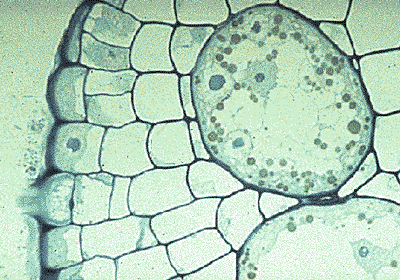







Colecochaetales may be found growing epiphytically in freshwater habitats, on the stems and leaves of larger aquatic plants, or attached to rocks or soil. Coleochetaleans may reproduce asexually by producing free-swimming cells, which leave to begin a new plant. Sexual reproduction is oogamous, with a large non-motile egg, and smaller free-swimming sperm.
Coleochaetales produce a single sperm per antheridium. In parenchymatous species of Coleochaete, the antheridium is multicellular, and surrounds a region in which the sperm develop. This is in contrast to the antheridium of most other green algae, in which is a single cell divides into sperm within its original cell wall.

When sperm and egg unite, they form a zygote, the only diploid cell in the life cycle. Coleochaetales therefore have a haploid life cycle. Coleochaete is unique among charophytes, in its retention of the zygotes on the parental alga. The surrounding cells divide to produce a layer of sterile tissue which envelops the zygote, and may provide nourishment as do placental transfer cells in plants. The photograph above shows a section made through a reproductive individual. The ruptured cell at the far left is an unfertilized oogonium (egg cell), and the large cells embedded in tissues at the right are zygotes.
The zygote undergoes meiosis directly, followed by one or more mitotic divisions, to produce eight to thirty-two zoospores. The zoospores each swim away to begin life as a new organism.


